Welcome to Davis!
FAQ's for new students
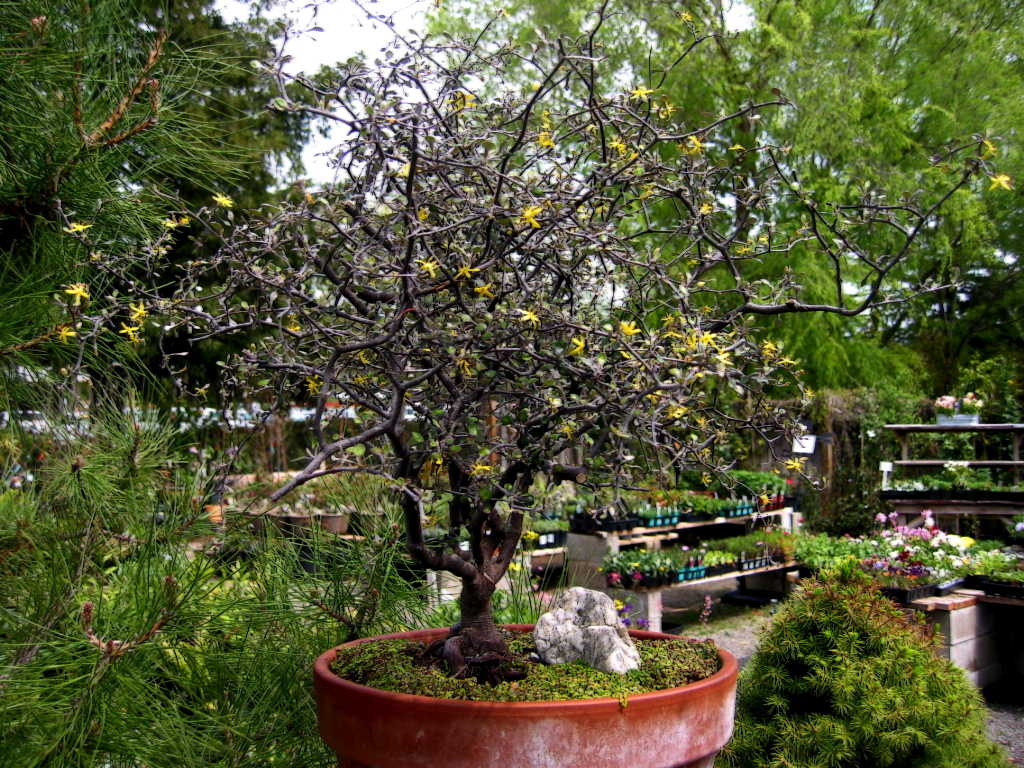
Corokia cotoneaster, grown as a bonsai. The best place for the hardy species of bonsai is outdoors in light shade. They need frequent watering, perhaps daily in the summer in our climate. Indoor conditions are usually not bright enough for them.
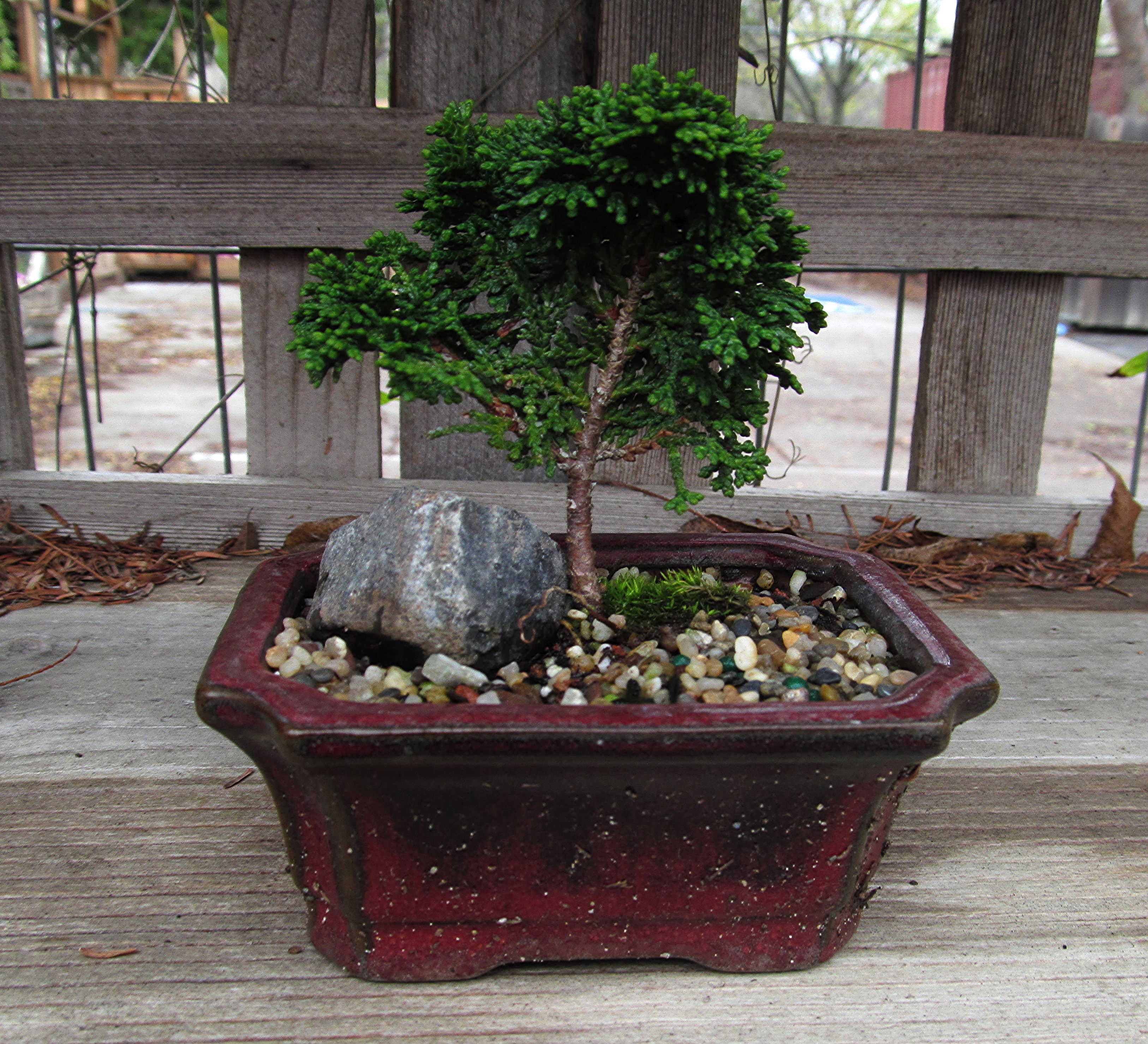 Chamaecyparis, False cypress, grown as a bonsai. The best place for the hardy species of bonsai is outdoors in light shade. They need frequent watering, perhaps daily in the summer in our climate. Indoor conditions are usually not bright enough for them.
Chamaecyparis, False cypress, grown as a bonsai. The best place for the hardy species of bonsai is outdoors in light shade. They need frequent watering, perhaps daily in the summer in our climate. Indoor conditions are usually not bright enough for them.
 This cute little variety of jade plant (Crassula), is called 'Hobbit'. Jade plants are popular succulents to grow indoors and can do reasonably well if they get bright light. Frost-tender, so your outdoor jade needs to be sheltered in the winter. Keep them dry.
This cute little variety of jade plant (Crassula), is called 'Hobbit'. Jade plants are popular succulents to grow indoors and can do reasonably well if they get bright light. Frost-tender, so your outdoor jade needs to be sheltered in the winter. Keep them dry.
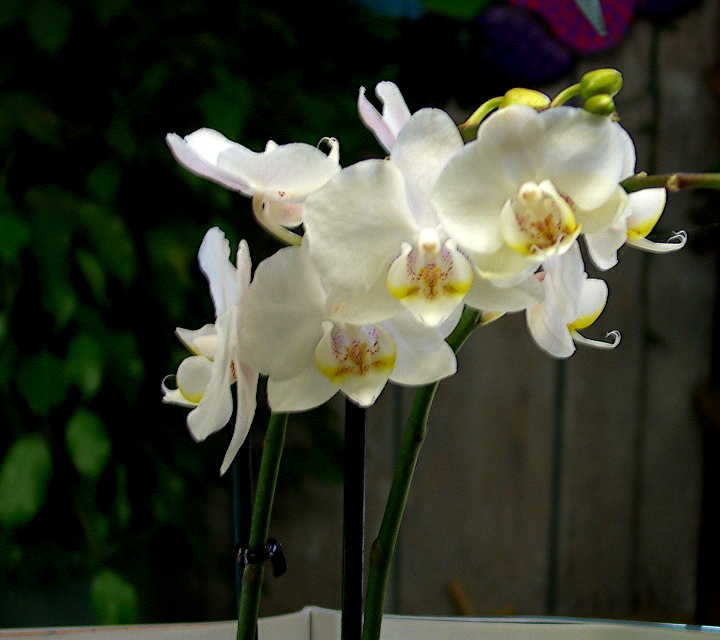 Phalaenopsis (Moth orchid) is the most popular orchid. You can get a plant to bloom for several weeks. Getting it to rebloom can be the tricky part. Orchids prefer bright indirect light, and need to be watered carefully.
Phalaenopsis (Moth orchid) is the most popular orchid. You can get a plant to bloom for several weeks. Getting it to rebloom can be the tricky part. Orchids prefer bright indirect light, and need to be watered carefully.
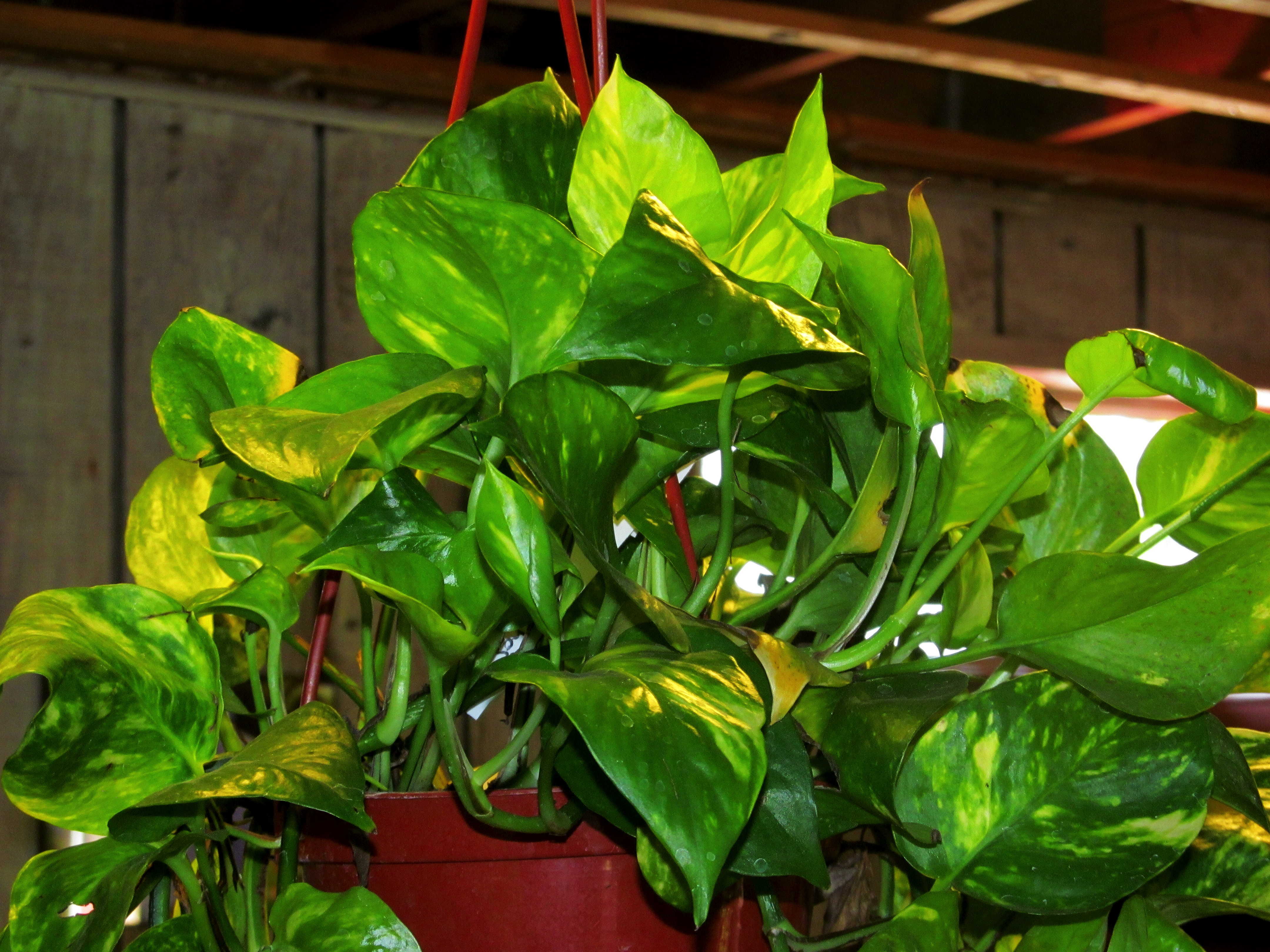 Golden pothos is one of the most foolproof houseplants you can grow. Tolerant of low light and neglect, it is a vine that can be allowed to cascade from a hanging pot, or can be trained along the wall or ceiling all around the room.
Golden pothos is one of the most foolproof houseplants you can grow. Tolerant of low light and neglect, it is a vine that can be allowed to cascade from a hanging pot, or can be trained along the wall or ceiling all around the room.
 An indoor cactus! Rhipsalis (Mistletoe cactus) comes from tropical regions, and can grow nicely with less light than the more traditional desert cactus species.
An indoor cactus! Rhipsalis (Mistletoe cactus) comes from tropical regions, and can grow nicely with less light than the more traditional desert cactus species.
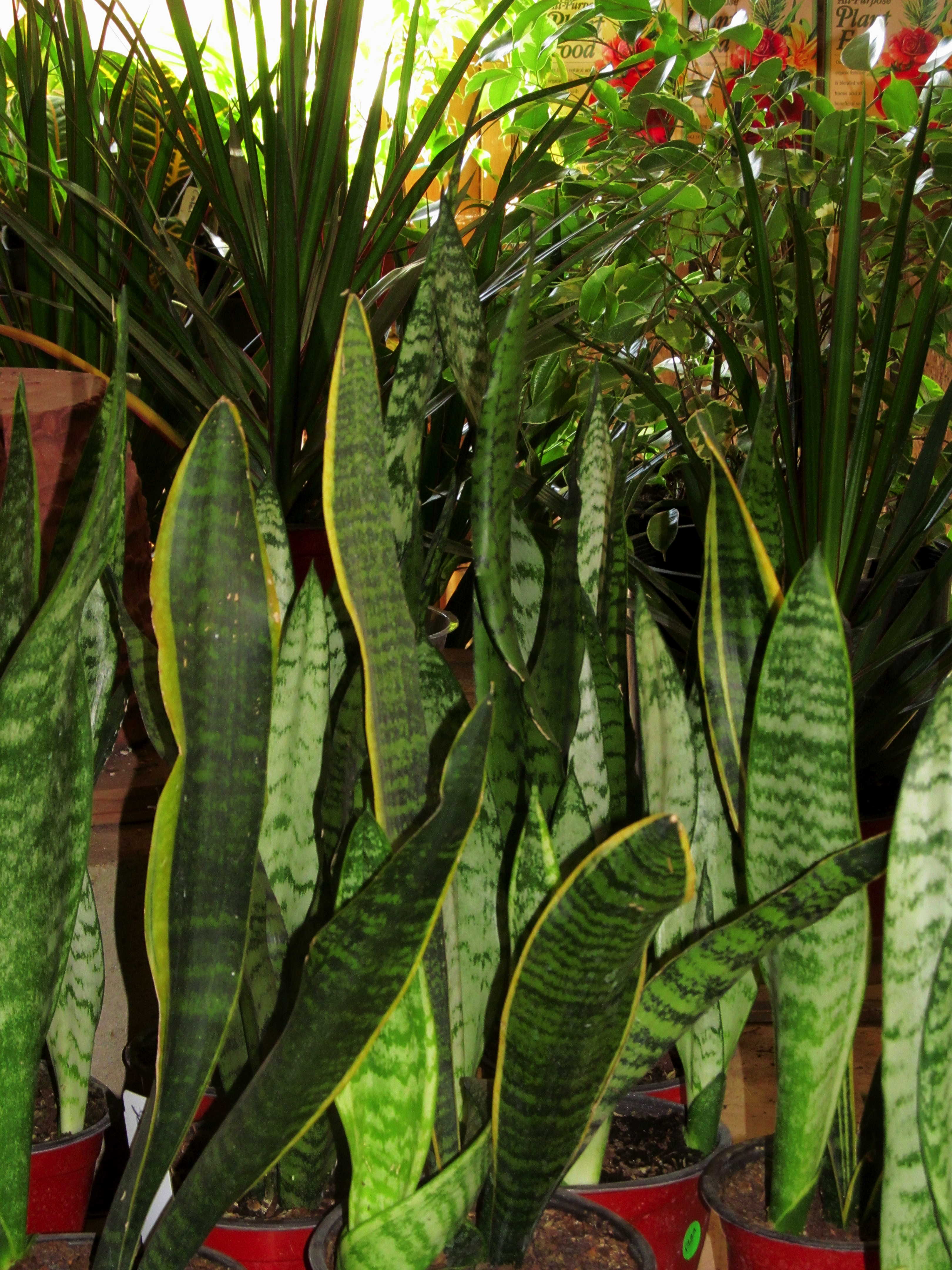 Sansevieria trifasciata (Snake plant, Mother-in-law's tongue) is nearly indestructible. It can grow in very low light and go for extended periods without water. The flower is uncommon and not showy, but has a sweet fragrance.
Sansevieria trifasciata (Snake plant, Mother-in-law's tongue) is nearly indestructible. It can grow in very low light and go for extended periods without water. The flower is uncommon and not showy, but has a sweet fragrance.
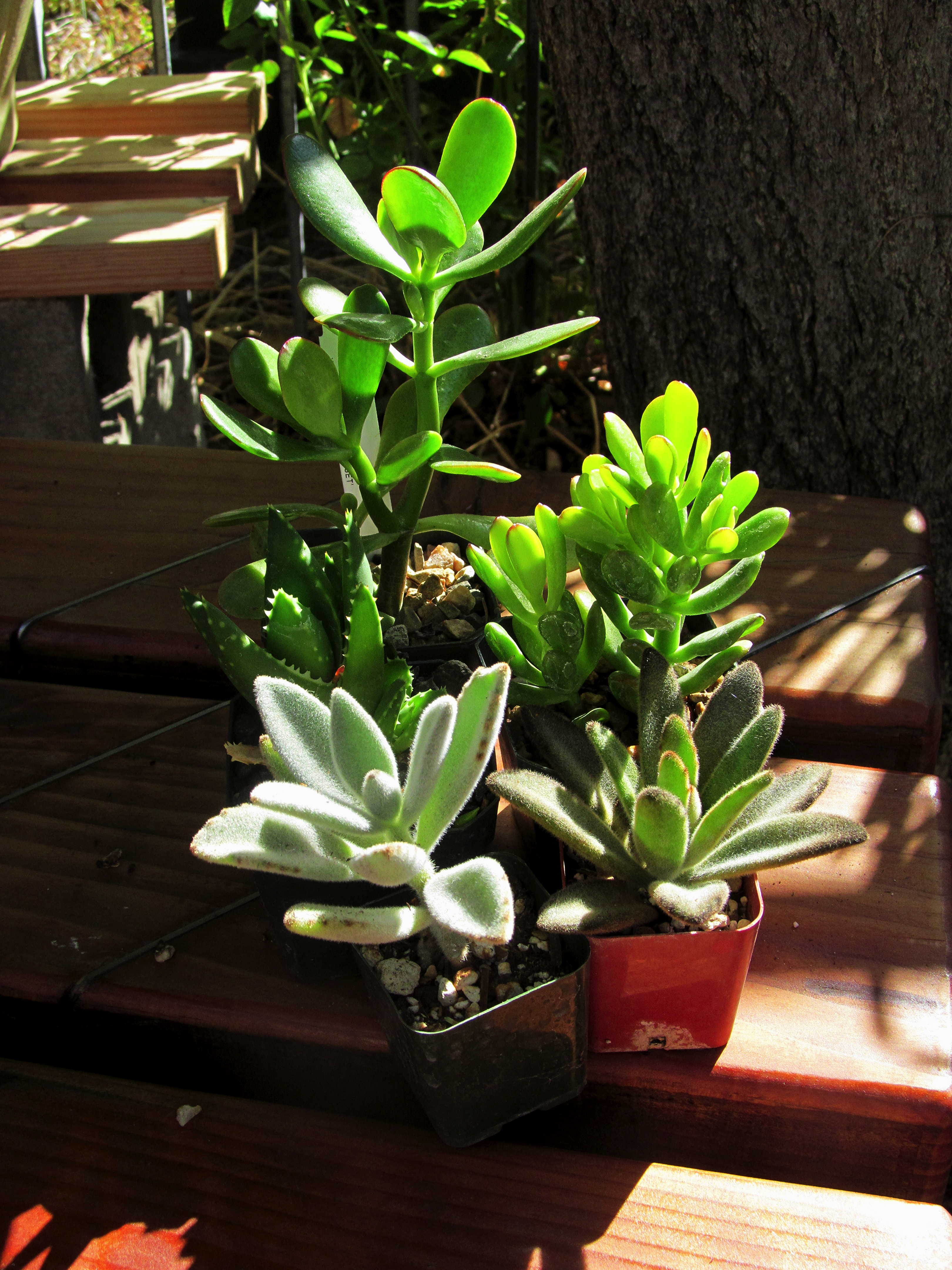 Succulents have become very popular in the last few years. Most are better outdoors, but for indoors look for the green leaved or fuzzy-leaved types. Shown here: panda plant (Kalanchoe), gold-tooth aloe (Aloe nobilis), and two types of jade plant.
Succulents have become very popular in the last few years. Most are better outdoors, but for indoors look for the green leaved or fuzzy-leaved types. Shown here: panda plant (Kalanchoe), gold-tooth aloe (Aloe nobilis), and two types of jade plant.
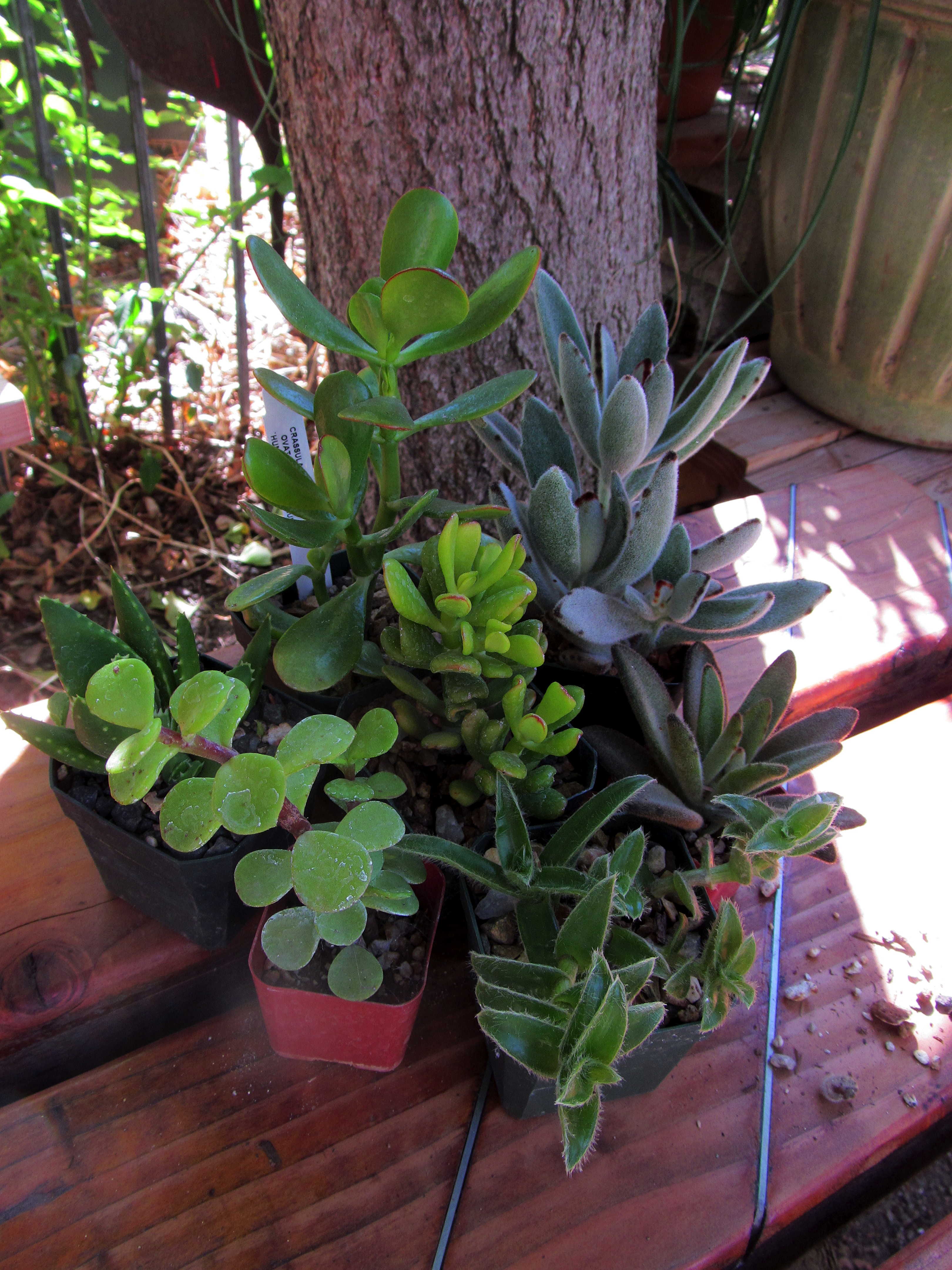 Shown here, clockwise from bottom left: elephant's food (Portulacaria), gold-toothed aloe (Aloe nobilis), jade plant (Crassula argentea), two types of panda plant (Kalanchoe), kitten ears (Cyanotis somaliensis); center is Crassula Hobbit.
Shown here, clockwise from bottom left: elephant's food (Portulacaria), gold-toothed aloe (Aloe nobilis), jade plant (Crassula argentea), two types of panda plant (Kalanchoe), kitten ears (Cyanotis somaliensis); center is Crassula Hobbit.
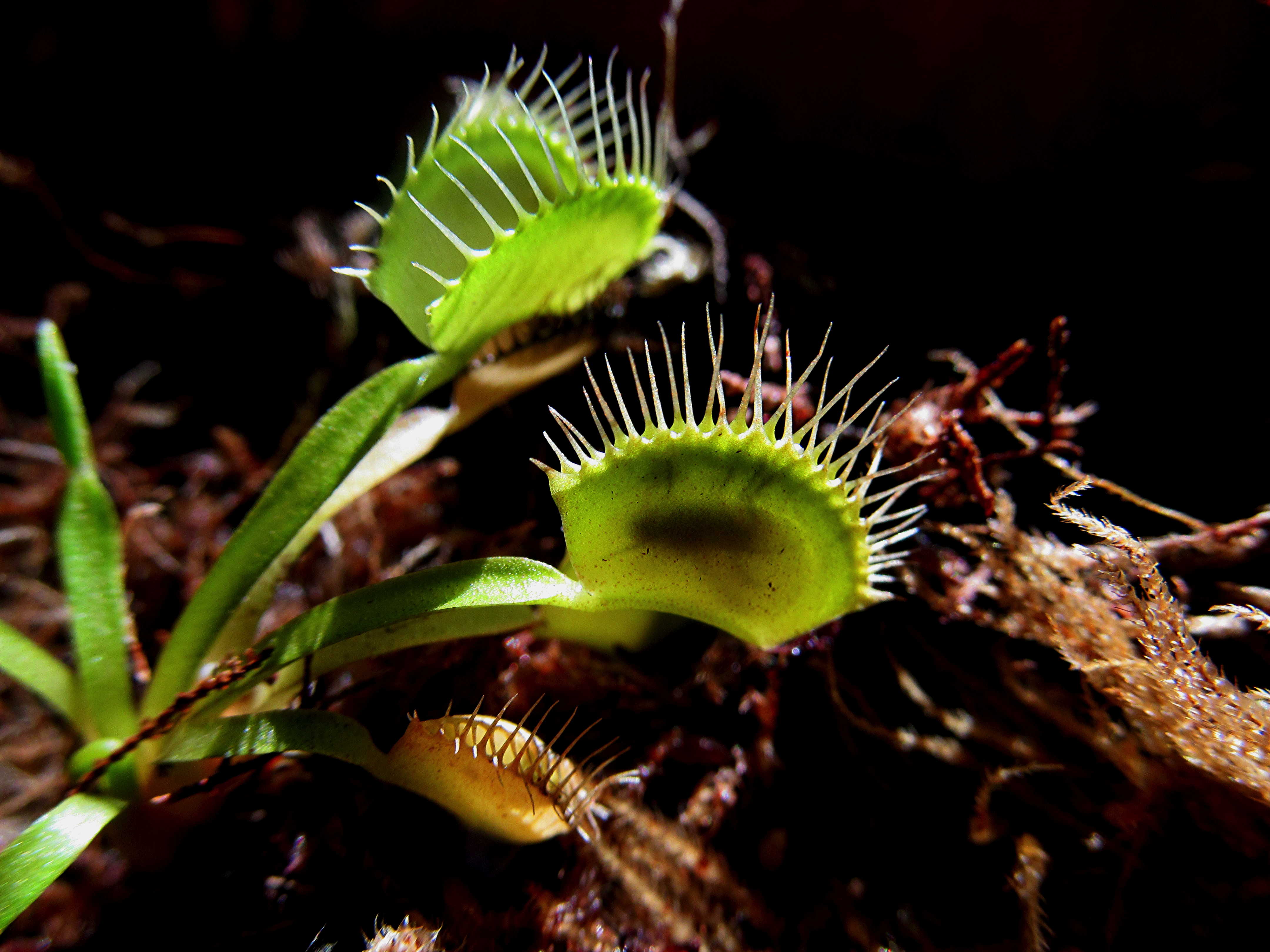 Fun to grow and popular with kids, it's unfortunate that Venus flytraps are so often sold as houseplants. They really belong outdoors, and have some special requirements as to soil and water.
Fun to grow and popular with kids, it's unfortunate that Venus flytraps are so often sold as houseplants. They really belong outdoors, and have some special requirements as to soil and water.
Welcome to Davis!
It's October, and in Davis that means we have a whole new crop of residents. Thousands of students arrive from all over the world in September, settle in
to their dorms or off-campus housing, and gradually find their way out into the community for goods and services.
So garden professionals and retailers get a new batch of novice gardeners each year, their enthusiasm unfettered by failure and untempered by the realities
of our climate. Indoors and out, they want greenery and color.
And we get questions ....
Can I grow cactus indoors? How about succulents?
The best place for your succulent and cactus collection is outside in a sunny location. Some can take shade, and a few prefer it.
Spiny cactus plants from desert regions aren't great houseplants. They need much brighter light than you have in a typical house. Tropical cactus species
can grow indoors. Tropical cactus includes zygocactus (sometimes sold as Christmas cactus, because they bloom around the holidays), orchid cactus
(Epiphyllum), and mistletoe cactus (Rhipsalis).
Some other types of succulents will grow indoors. A good rule: look for the green ones. Some of the fuzzy ones are ok, too. Grey-leaved types usually want
direct sun. Going by botanical name: you're likely to do best with Aloe, Crassula, and Kalanchoe. Examples of those are Aloe vera (which is the medicinal
aloe), jade plant, and panda plant.
Put succulents and cactus in the sunniest window you have. Direct sunlight through the window onto the leaves is good. Water them only when they get very
dry. That's probably once every 10 to 14 days.
Succulents and cactus don't mind being rootbound, and can stay in the same pot for years. If you transplant them, use a potting mix that has pumice or lava
rock added for drainage. Make sure the pot has a drain hole. Don't put them into a much bigger pot, just increase by an inch or so diameter. You can have
the garden store transplant them for you!
Can I grow bonsai indoors?
Most bonsai are outdoor trees, and are not happy indoors. They like to be in the shade of a tree on your patio or porch. Morning sun is ok. Bonsai have
restricted roots in small pots, so they dry out very quickly and need frequent watering here during the warm months. They are cold-hardy enough to live
outside during winter.
Exceptions include some tropical plants which are grown as indoor bonsai. Examples include dwarf schefflera and ficus. They need to be indoors in
freezing weather. Ivy is sometimes grown as an indoor bonsai. It can also be outside, though only in the shade.
Once a year you take the bonsai tree out of the pot and trim off about 25% of the roots. That is best done in mild weather, such as March or October.
They can be shaped with wire, and trimmed to create a unique look of character and age. Sometimes bonsai are planted together with other tiny accent
plants to make a miniature landscape.
Can I grow venus flytraps?
They won't live indoors for very long. Venus flytraps actually come from boggy soil areas of the Carolinas. They like sun or light shade, need special soil
and very pure water (not Davis tap water!), and need to be where it gets cold enough in winter to cause them to go dormant. If you get interested in
carnivorous plants, and find a good source, there are better choices such as pitcher plants or sundews. If you do buy a Venus flytrap in the fall, put it
outside in a slightly sheltered location and expect it to go dormant.
Can I grow bamboo indoors?
I generally don't recommend growing bamboo as a houseplant. It is fussy about watering, indoor conditions are rarely bright enough, and spider mites and
other pests are common and difficult to manage. Leaf and culm sheath litter would be a nuisance.
But I have one customer who was bound and determined to grow bamboo in her living room. She had a feng shui consultant who urged her to incorporate bamboo
into her surroundings. Her outdoor container plantings of Alphonse Karr bamboo that flanked her garage gave her insight into the water requirements, and
they were very attractive year-around. So after much discussion, and fully aware of the challenges, she and her husband selected a very large ceramic
container and settled on a five-gallon Bambusa ventricosa.
More than five years later, their Buddha's Belly bamboo is the beautiful centerpiece of their living room. Conditions were good: it is centered in a
high-ceiling room with south-facing windows and sliding glass doors. The husband, an engineering sort, has carefully calculated the amount of water needed
to fully wet the soil and drain through without spilling out onto their hardwood floors from the protective saucer. I had emphasized the importance of
watering sufficiently to leach through accumulated salts and reduce leaf burn.
They do get some leaf burn, but they simply remove unsightly leaves. The foliage is misted frequently and sponged occasionally to prevent mites. The large
leaves of B. ventricosa make sponging a relatively easy task. They keep a close watch for mealybugs.
The plant appears to have come into balance, as it were, with respect to nutrition. Instead of feeding the bamboo, I suggest using a potting soil that
contains some organic fertilizer. Leaves fall, new shoots arise, and so far there haven't been any apparent nutritional deficiencies.
This has met with sufficient success that I've changed my advice about bamboo as a houseplant. It can be done, but it is a lot of work.
What about lucky bamboo?
That's actually a Dracaena, and it is a great indoor plant. Nearly indestructible. It isn't a bamboo at all. Look for it at discount retailers and grocery
stores (in the florist department).
I got an orchid. Now what do I do?
Orchids wouldn't be my first choice for novice gardeners. Having said that, the Phalaenopsis orchids that are being mass-produced and sold at various
retail outlets aren't as hard to grow as others.
First, I always recommend transplanting them out of that dense moss that some growers are using, and into orchid bark. Garden centers can help you with
that.
Don't overwater. Orchids in bark usually need water about once a week. In the moss, they can go 2 to 3 weeks, or more.
Find a bright place in your room, a little ways in from the window.
The blossom spike that it came with will continue to open for at least a couple more weeks, and each bloom holds for several days or more. So you can get 4
to 6 weeks of bloom, or more, from your plant. The tricky part is getting them to bloom again. If new shoots are growing from the side of the plant, those
will bloom in a few months. If the light isn't sufficient, or the roots are rotting away, you won't get new shoots. In that situation the old plant can
hang on for months, but isn't likely to bloom again.
I always kill houseplants. What's easy to grow?
Golden pothos, philodendrons, snake plant, spider plant, zz plant. You really can't go wrong with those.
If you have brighter conditions and are careful about overwatering, you may do well with croton, dracena, and ficus. Swedish ivy and zebrina can grow very
lush if you have bright light. They get stringier if your light is low, but are surprisingly adaptable. Just start new plants from cuttings every year of
so when they get leggy.
Avoid indoor palms in general: the types sold at most stores require bright conditions and high humidity, pure water, and are very prone to spider mites.
Are there plants that flower indoors?
Most of the easier houseplants are foliage plants that rarely flower, if at all. Peace lily (Spathiphyllum) does have an attractive white flower. It's a
relative of calla lily, which is obvious when you look at the blossom structure.
Can I plant things in the garden now?
Yes! Fall is a great time to plant lots of different vegetables and flowers, to renovate or replace your lawn, to plant perennials for bloom next year and
beyond. Our first frost is several weeks away. Warm soil, cooling temperatures, and (hopefully) the oncoming rainy season get plants off to a great start.
Written for the Davis Enterprise, October 23 2014
Have PowerPoint? Here's an overview of the Davis region
© 2014 Don Shor, Redwood Barn Nursery, Inc., 1607 Fifth Street, Davis, Ca 95616
www.redwoodbarn.com
Feel free to copy and distribute this article with attribution to this author.
Click here for Don's other Davis Enterprise articles
